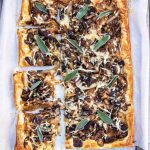I am.
I need to…
Plant carrots
Water, everything
Move a hay bale that is blocking the morning light getting to my arugula patch
Deep water the orchard
Plant a new wild flower bed
Move bramble from the top of the sunflower bed so they can come up
Plant more lettuce. Always need to plant more lettuce
Repair the holes in the drip irrigation system. Tomorrow my weary mid says
Thin the Jerusalem artichokes which are knocking over a wall
Move mulch out of my driveway where it has been for a month
Hang old CDs above my peas to keep munching doves away
That is just what spring is like in our house. Task after task. It is a happy mixture of work, love, talk of moving to a small apartment, a sore back, and awe. This is our little piece of desert.
A few of our activities in the past few weeks:
Burning the meadow. While I worry this practice adds more alkalinity (ash) to an already very alkaline soil my meadow seems to come back faster, and happier, if we burn it.
Trying to figure out what is wrong with my peach tree. Thank goodness Bernalillo County Extension offers free diagnosis of such problems. Result= bacterial canker which resulted in a major haircut for the tree, removing diseased tissue. The full report on the canker is at the end of this blog.
Indoor seed starting. See more about this in a NEW video from Bernalillo County Extension
Hardening off seedlings before they go in the garden
Taking the strawberry patch from tangled mess to tidy patch
Treating the strawberries for chlorosis (iron deficiency). That sickly yellow leaf color with darker green veins is definitely a sign of an iron problem (confirmed by a soil test)
Planting a new elderberry and a fruiting mulberry
Changing the covering on the spring bed from plastic to netting as weather got warmer
Watching the artichoke and nettles explode with growth–pictures below are a 3 weeks apart
Placing shade cloth over the new shade structure we built over winter
Planting hops (and grapes) to grow up the shade structure and provide shade
Harvesting nettles, cutting them, sauteing them (along with with arugula and dandelion) in olive oil and making ravioli with Camino De Paz goat ricotta. Gloves prevent raw nettles from stinging. Once cooked they no longer sting and are delicious.
Eating lots of salad
Pea rows. I spread mulched sunflower stalks over the seeds. The stalks are great for moisture retention.
Watching my seed catalog be re-purposed by an enthusiastic daughter
And watering the Buddha… for good luck, of course
Primary Diagnosis: Bacterial Canker
Pseudomonas syringae
Bacterial Canker of stone fruit occurs in all major fruit growing areas in the world and all stone fruit varieties are susceptible to the disease. The disease is also know as gummosis, blossom blast, spur and twig blight, sour sap, and dieback . The bacteria can infect all above ground portions of the plant including: branches, twigs, buds, leaves, and fruit. The severity of damage varies from subtle, almost undetectable effects to rapid death of trees in nurseries and orchards. A combination of several predisposing elements, particularly climatic and soil factors favor disease expression.
Symptoms are highly variable and are heavily dependent on cultivar, age of the tree, plant tissue affected, and the nature of predisposing factors. Cankers are the most characteristic symptom that develop on twigs, at the base of a flower or leaf bud, in pruning or other wounds and at the base of infected spurs. Cankers often appear darker than the normal bark, sunken in their centers, and they may extend upward for a considerable distance. Leaves and shoot growth beyond the canker may wilt and die during the growing season. Leaf and fruit infections appear as tan to brown water-soaked depressions that radiate out from the initial infection point. Older infections on leaves often become dark brown and dry and the center will fall from the lesion resulting in a shot hole appearance.
Th bacteria overwinters in cankers and buds and systemically in other symptom-less host tissue. The pathogen in moved to susceptible tissue by water, wind and plant to plant contact, where a new infection can begin. Bacterial canker is much more severe in areas where trees are stress and predisposed to infection. Common predisposing stress factors include freeze injury, physical wounds, nematode damage, poor soil fertility or drainage, drought, insect pests and other stone fruit pathogens. The bacteria can be spread through an orchard on pruning tools which should be disinfected between trees if bacterial canker is present.
Control of the disease relies heavily on reducing plant stress and initial bacterial inoculum. Cankers should be pruned several inches below an obvious infection during the winter when cankers are inactive. Branch trimmings should be burned, buried or disposed of in the sanitary landfill. Proper irrigation and fertilization will reduce plant stress and reduce the severity of the disease. Special care should be taken when choosing species and cultivar of stone fruit. There are differences in susceptibility to the disease and selecting a stone fruit variety ill suited to a particular environment will predispose it to infection. Chemical control of bacterial canker is based on protective sprays. Sprays during the growing season have not been effective in disease control. These sprays, however, protect from initial infection but cannot prevent the canker phase once infection has begun.
Edible celebrates New Mexico's food culture, season by season. We believe that knowing where our food comes from is a powerful thing. With our high-quality, aesthetically pleasing and informative publication, we inspire readers to support and celebrate the growers, producers, chefs, beverage and food artisans, and other food professionals in our community.

































